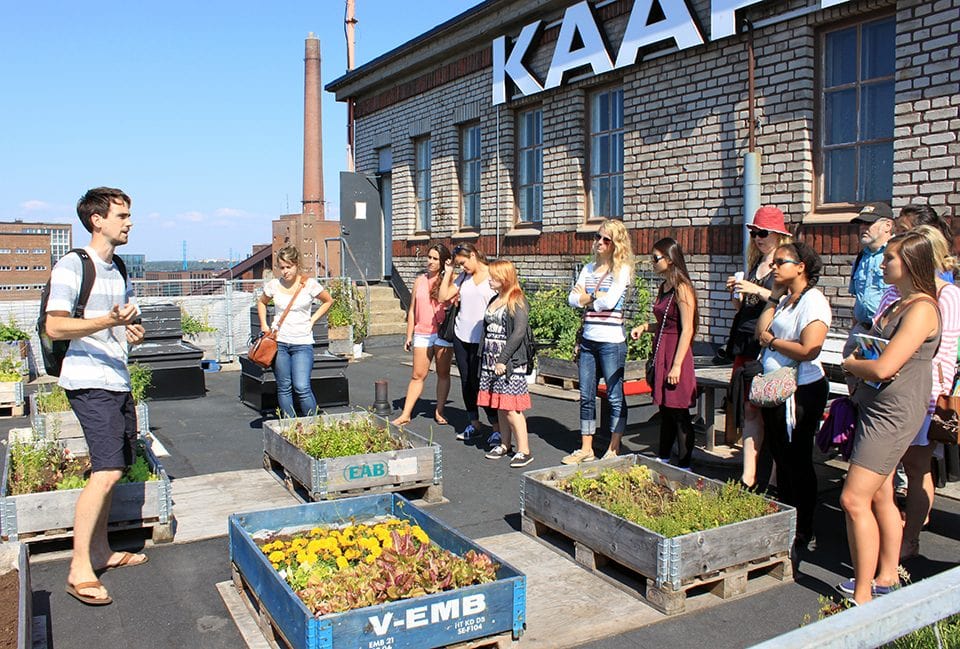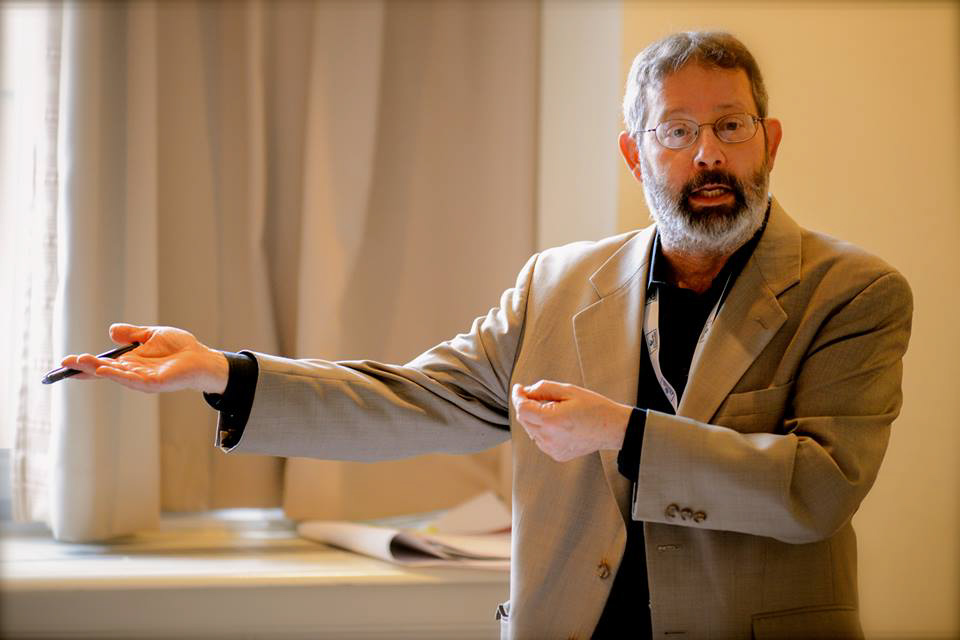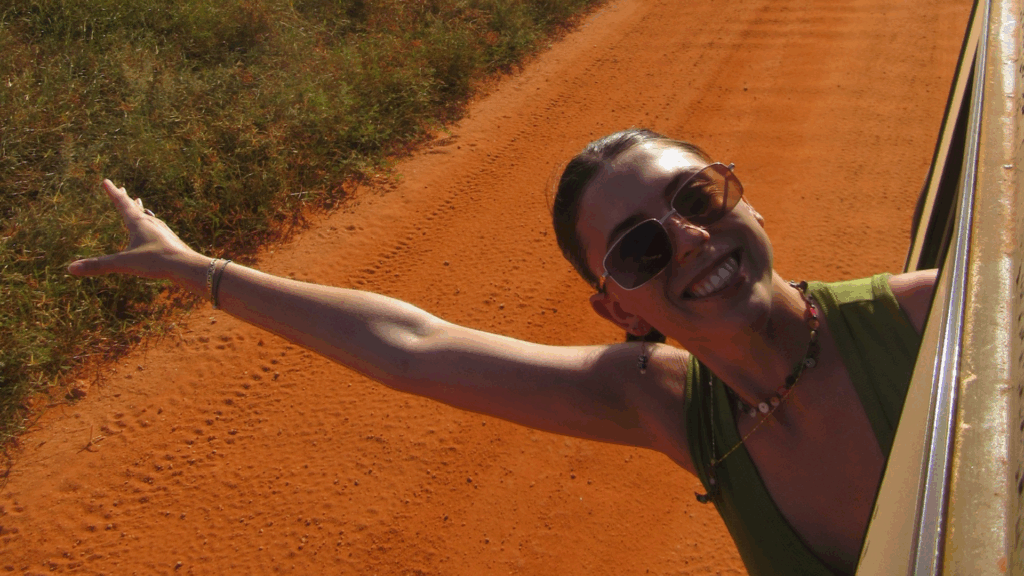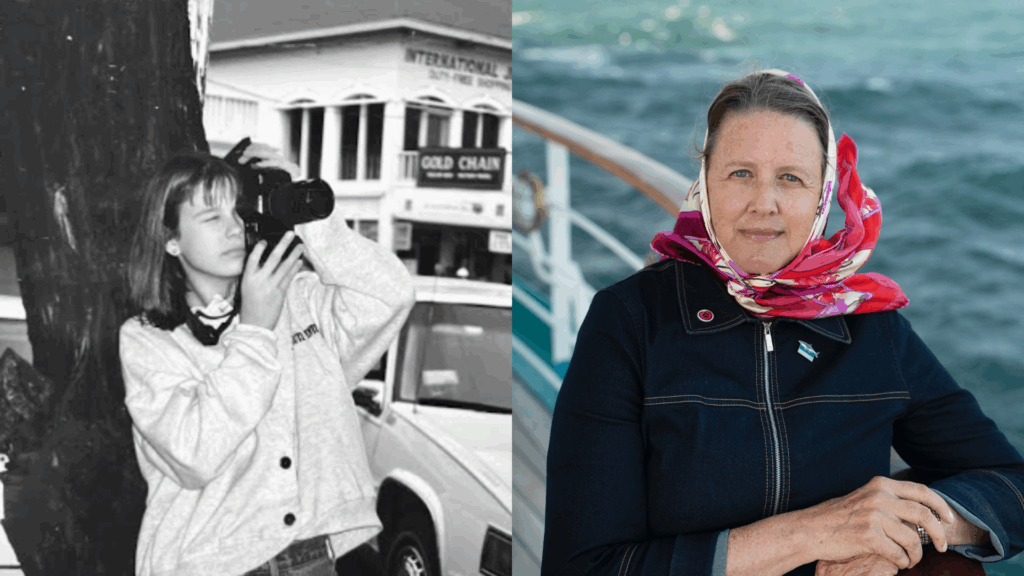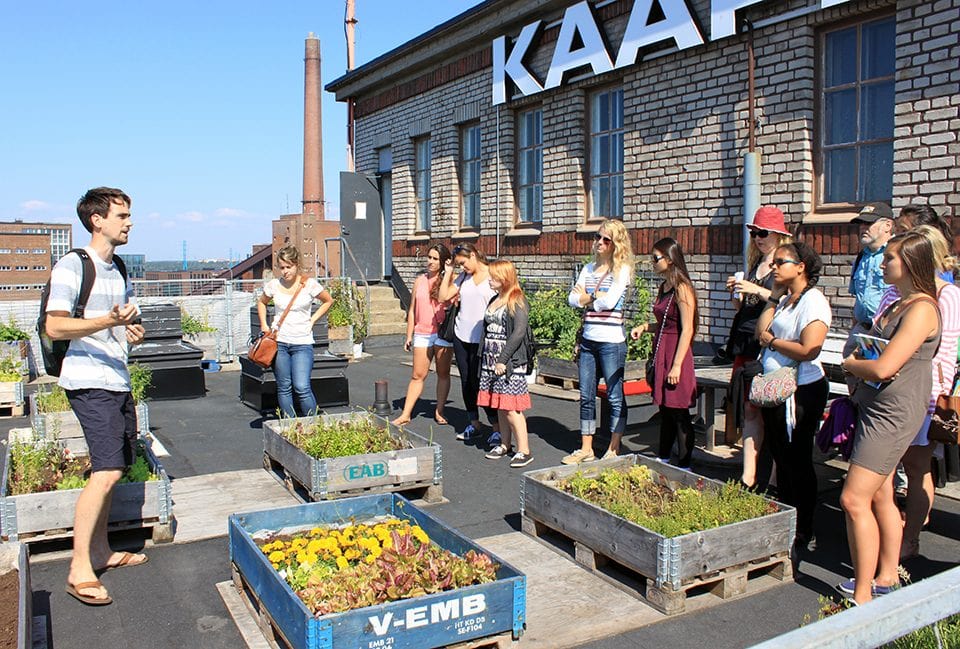
This summer, students in Professor Rick Barnes’ Sustainable Lifestyles class have discussed how a community’s design is intimately related to how residents of that community live. This psychology course has covered benefits of living an environmentally friendly community and ways of encouraging a sustainable behavior, with a particular focus on the European cities on our Summer 2014 voyage itinerary — not only via firsthand observations of pratices in those cities, but through readings by European experts.
The class was fortunate enough to read a particularly relevant book chapter, “Helsinki, Finland: Greenness and Urban Form,” by Finnish city planner Maria Jaakkola — and then meet her in person during an informative and interactive field lab that brought the students to the Helsinki City Planning Department.
In two-hour discussion that included plenty of time for Q&A, Maria, and her colleagues Reetta Keisanen and Alpo Tani, shared some of the challenges they face as they work toward implementing land-use vision spelled out in the Helsinki City Plan, dubbed “Vision 2050,” that was released just last year. Maria told the students that this document guides all city planning and it is a master plan that is the “biggest land-use change in 100 years.” Says Maria, “The goal is to make Helsinki the most liveable city in the world.”
To do just that by 2050, when it comes to traffic, the plan calls for a more efficient rail transport system, priority consideration for the pedestrian, and an improved network of biking paths. The bike trails in Helsinki are already quite good, with 1200 kilometers of paths designated for cyclists. But Reetta Keisanen noted, “They can be better. We want to make bike-lane standards consistent, and connect paths so it is more efficient to travel longer distances.”
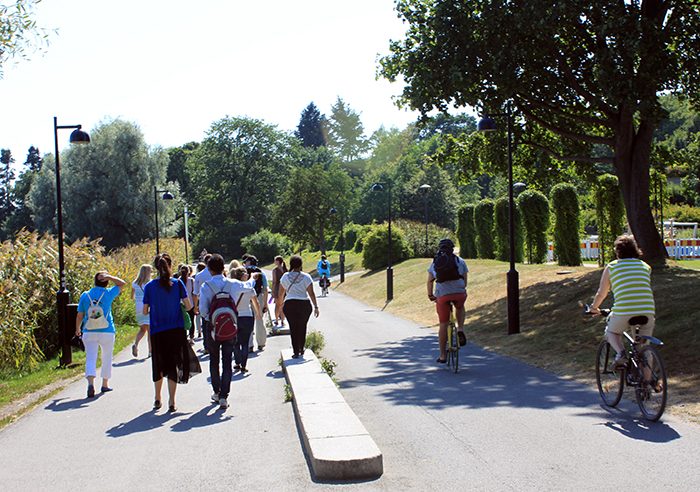
To illustrate her point, Reetta showed snapshots of existing city bike lanes, where, for example, a path took people in an inefficient route from point A to point B. Other photos illustrated inconvenient bike-lane turns that meant cyclists tended to bike where they really shouldn’t (off the designated lanes and in traffic).
Other long-term goals for Helsinki include building brand-new city districts. Urban living in Finland is growing in popularity, according to Alpo Tani, which means Helsinki’s population is growing steadily. By 2050, it is estimated city population will grow to 860,000 from its current 600,000+, and there simply aren’t enough housing options for that growth. Already some new mixed-use (residential and business) areas have been developed in harbor areas where a large commercial port had been relocated to another area of the city. But many more new neighborhoods are planned, again, with a focus on making the areas very friendly for pedestrians. And in all of these new developments easy access to green space is key.
After all, says Maria Jaakola, green areas — where residents can enjoy the outdoors and nature ‚Äì are central to good psychological and physical health — a topic Rick Barnes’ Sustainable Lifestyles class had just been discussing the day prior on board the MV Explorer. “When people are asked, ‘What makes a good city?'” said Maria. “Most people answer ‘green spaces’ and ‘water.'”
While at least 40 percent of the land area of Helsinki comprises green space — including urban parks, agricultural areas and forest — the growth in urban development and population does increase the pressure on these green spots. It’s a challenge city planners acknowledge, but they also know that access to nature and its recreational opportunities are key to reaching their goal of making the “city by the sea” one of the most approachable and liveable cities in the world.
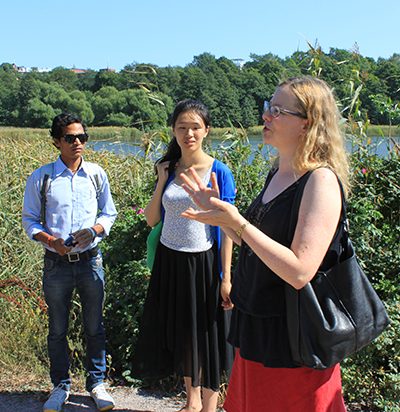
After the presentation at the City Planning Department, which is located in a former bus station, the students took the streets to take a public bus to Kaapeli (or “the cable factory”), which is a cultural center and office space located in a former factory building where cable was made. Students dined like the Kaapeli’s workers do at the building’s lively caf√©, and then proceeded to the rooftop garden to learn a bit about a grassroots initiative, where community members raise small vegetables and colorful flowers in a challenging environment.
With a gardening season of about three months, not to mention steady wind and a cap on the weight of the planting boxes that can be placed on the roof, gardeners are limited in what can successfully be grown there. Still, says garden volunteer Joshua Finch, the rooftop garden is an example of what is possible with the power of human imagination ‚Äì and some elbow grease: “If we can make it work ‚Äì grow what we do ‚Äì in this very marginal area, imagine what could be done on rooftops in ideal conditions?”
Joshua’s goal is to encourage society to look at spaces for multiple uses: “We need to stop putting up arbitrary boundaries. A roof doesn’t have to only be a roof.” In other words, what else can we do with parking lots, residences, and open space in a sustainable way that could benefit the community at large?
The day wrapped up with a walking tour of some of Helsinki’s key landmarks and green areas, including Central Park, one of Helsinki’s “green fingers” that stretches 10 kilometers long from the heart of the city to the northern outskirts. The park contains many pedestrian paths and bike lanes, manicured gardens, picnic areas and the large T√∂√∂l√∂nlahti Bay, where residents enjoy fishing and stand-up paddling in the summer.
In all, the Sustainable Lifestyles field lab in Helsinki allowed students to see firsthand some of the concepts of sustainable city living and city planning that had been discussed in the classroom, exemplifying the experiential learning that is central to Semester at Sea’s educational philosophy.
